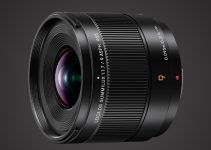The fully-functioned timeline setup along with the impressive number of powerful, editing features makes DaVinci Resolve 12.5 even more appealing option for aspiring filmmakers, content creators and video editors alike. Now, whether you want to do either some basic chroma keying or tackle more advanced compositing tasks, Resolve 12.5 has got you covered.
In the following tutorial, the VFX artist, digital media specialist and instructor Ben Brownlee, will show us how you can easily replace a cloudy or overcast sky in your footage inside of DaVinci Resolve in no time. This tutorial will be also useful for those of you who are not quite familiar with using power windows, masking and editing in DaVinci Resolve 12 and Resolve 12.5 respectively.
Before you start isolating the flat sky in your video, you could optionally do a quick primary color correction if required. Then, create a new Serial Node and by selecting the Qualifier eyedropper just key the flat sky. You can do so by either clicking a pixel of the part of the image you want to isolate or by clicking and dragging across the whole sky.
To simplify the process even further, you can display only the highlights of your image by utilizing the Shift + H key combination. That way, it will be easier for you to evaluate and improve the key accordingly by tweaking the Hue, Saturation, and Luminance color components through the Qualifier controls.
If you don’t get the perfect key instantly, you can always create a power window to eliminate the color spills into the rest of your image (if there are any). Once you isolate the sky, you can either change its color if you want to or you can apply any other color correction or color grading adjustment.
After that, head over to the Color Page again and by right-clicking in the Node Editor select Add an Alpha Output. Now, if you feed the Alpha channel of your Key Node to the just created Alpha Output, the background plate footage placed below your main clip should become visible. Finally, in the Key palette invert the key image to get the proper looking composition as a final result.
You can also tweak the color correction parameters of your plate footage to match it perfectly with your main clip. In the end, you can also do further color corrections of the entire image by enabling the Timeline grade mode of the Node Editor and then creating a new Serial Node. Alternatively, if you don’t want to affect all the clips on your timeline you can select only the two videos and create a Compound Clip that later can be color graded as a separate clip.
Ultimately, if you want to learn more about color grading in DaVinci Resolve 12 make sure you check out some of the free resources by Alex Jordan in the 4KShooters’ Store. There, you will also find the insightful DaVinci Resolve 12 – Simplified Course that contains recent updates regarding the latest Resolve 12.5. The best part is that you can currently get the entire course for just $99.
[source: Digimedia Pros]
Disclaimer: As an Amazon Associate partner and participant in B&H and Adorama Affiliate programmes, we earn a small comission from each purchase made through the affiliate links listed above at no additional cost to you.
Claim your copy of DAVINCI RESOLVE - SIMPLIFIED COURSE with 50% off! Get Instant Access!




